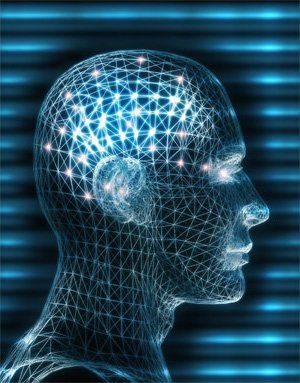WHAT IS A NEUROPSYCHOLOGICAL EVALUATION?
- By Admin
- •
- 03 Jan, 2017
- •




Xadago (safinamide) was approved for the use of treatment in Parkinson’s disease as an add-on therapy with Sinemet (carbidopa-levodopa) by the U.S. Food and Drug Administration in early 2017 and became commercially available in July 2017.
The drug’s mechanism of action is a monoamine oxidase (MAO)-B inhibitor that works by blocking the breakdown of levodopa in the brain, thus increasing its availability. The drug was designed to be used in patients already taking carbidopa-levodopa and who are experiencing “off” times. “Off” times are described as periods when Parkinson symptoms are worse including increased tremors, slowness of movement or stiffness.
The studies found that patients who used this medication in combination with carbidopa-levodopa experienced increased “on” time without bothersome dyskinesia. The drug is a once daily formula and starts at 50 mg for the first 2 weeks and is increased to 100 mg thereafter.
Contact the specialists at Central Neurology, P.L. for a consultation. They focus on a variety of neurological conditions, including treatment of Parkinson’s disease.
Contributed by Heather A. Herrema, D.O .



Forgetfulness can strike just about anyone at any age, and is often attributable to a common and relatively harmless cause. From changes in sleeping habits to certain types of vitamin and mineral deficiencies, periodic and minor memory lapses can be perfectly normal.
However, if you've noticed your forgetful moments ramping up in frequency, or if you've had other physical indicators that something's not quite right, like a few back-to-back fender benders after decades of perfect driving, a foggy or concussed feeling when you wake up in the morning or a change in appetite or energy level, you may be dealing with a more serious ailment that could require medical intervention.
While "dementia" can be a scary word, it doesn't need to be a death sentence for your memory. Many types of dementia are easily treatable with medication and lifestyle changes, and sometimes, any memory loss you've already experienced may even be reversible.
Read on to learn more about some of the most common forms of dementia, as well as what you can do to seek treatment and slow the progression of this frustrating but often manageable condition.
Lewy Body Dementia (LBD)
If you've been reading medical journals and wondering why there are so many references to the initials you know as "little black dress," you've likely been learning more about Lewy Body Dementia.
This category of dementia, which includes conditions like Parkinson's disease, is characterized by the presence of "lewy bodies," or a special type of protein, in the brain.
LBD can often manifest in those deemed "too young" for dementia but who have suffered traumatic brain injury (TBI), like football players, military veterans or motorcycle accident victims. Often, the symptoms of LBD may take years or even decades to manifest, making it difficult to pinpoint the precise cause.
LBD differs from other types of dementia, including Alzheimer's, and proper diagnosis is crucial to treatment. There are certain medications that can be quite effective for those dealing with LBD, while other medications that are commonly prescribed for those with Alzheimer's or more generalized dementia may result in harmful interactions and side effects for those with LBD.
Some signs of LBD can include:
• Tremors or other difficulties in movement
• Unpredictable levels of cognitive ability or alertness
• Visual hallucinations
• Changes in your sleep cycle, including more vivid dreams
• Trouble with complex mental activities
If you've noticed more than one of these symptoms over the past few months, it may be worthwhile to make an appointment with a neurologist to check out your symptoms and see what could be the cause.
Non-Lewy Body Dementia
Dementia that's non-LBD in nature can be tougher to diagnose at an early stage due to the absence of lewy bodies in the brain. Non-LBD types of dementia can include vascular dementia, often caused by mini-strokes that otherwise go undetected, as well as Alzheimer's disease and frontotemporal dementia (FTD).
Vascular dementia can often manifest itself in inappropriate or uncharacteristic behaviors, like unprompted emotional outbursts or reckless spending. Often, your family members may be the first to point out these changes, as they can accrue so slowly (much like the mini-strokes that cause them) that they go unnoticed by others.
Treating the problems that led to the mini-strokes, like beginning a blood thinner regimen or stopping smoking, can be enough to help restore blood flow to the affected areas of the brain.
FTD is marked by degradation in the frontotemporal lobe of the brain, and may manifest itself in depression-like symptoms. Those suffering from FTD may no longer find joy in their normal activities, may put grooming and other personal care to the back burner, and may become much more reclusive than normal.
Like vascular dementia, FTD can be treated when caught at an early stage and before much damage has taken place.
If any of these symptoms sound a warning bell for you, it's imperative to have a full neurological workup as quickly as possible. Although the thought of being diagnosed with dementia can be incredibly frightening, this diagnosis is the sole thing that can set you on the path to treatment.

- Shaking
- Concussion
- Confusion
- Dementia and Memory Loss
- Dizziness
- Double Vision
- Fainting and Collapsing
- Headaches and Migraines
- Movement Disorders
- Neck Pain
- Paralysis
- Seizures
- Vertigo
- Vision Loss

Migraines are one of the most common complaints that adults seek medical treatment for. Nearly 12 percent of the population has migraines, according to the Migraine Research Foundation. Each year there are more than 1.2 million emergency room visits for migraines and related head pain.
Unlike the headache that you might get after a stressful day or from looking at your computer screen for too long, migraines can seriously impact your daily life - and for more than a few hours every once in a while. Over 90 percent of people who have migraines find that they're unable to work or carry on with their day normally when they have the severe headaches.
If you have migraines, you don't have to suffer in silence. The first step in getting help is understanding the problem. Learning about migraines, what causes them and what you can do about them is just the beginning. When you know what you're up against, and you know what the treatments are, you can start finding relief.
Signs and Symptoms
Not all headaches are migraines. Migraines are severe and often focused on one side of the head, can include sensitivity to light or sound, and may come with a bought of nausea (or even vomiting). Auras, which are seeing light flashes, shimmering lights, or blind spots, can also accompany migraines.
Keep in mind, not every migraine sufferer experiences each sign and symptom. For example, less than onethird of people who have migraines also have auras. During the diagnosis process, the doctor will evaluate all of your symptoms together.
Tests and Evaluations
Only a licensed medical provider can diagnose and treat migraines. Even though you can spot some of the symptoms yourself, leave it to the pros to make the true diagnosis.
During your doctor's visit, the medical provider will take a full medical history. You'll need to provide information about your headache symptoms, how often you have headaches, where your head hurts, what happens before and during your headaches, other physical symptoms, lifestyle habits (such as smoking, alcohol intake, and physical activity), and your family's medical history.
The doctor will also give you a medical exam, including a neurological test. Depending on your symptoms and the medical provider's decision-making process, you may need diagnostic testing such as an MRI.
Triggers and Treatment
If the doctor does diagnose you with a migraine, you have plenty of treatment options. Not every type of treatment works for every migraine sufferer. In some cases, avoiding a trigger (something that sets off the headache) may stop the migraines from happening. Triggers can include stress, lack of sleep, changes in activities or routine, hormonal changes (in women), or foods or drinks.
You may need to track what you do, eat, and feel before a migraine to figure out what's triggering it. Different people have different triggers. You might find that your headaches start after extreme stress while you're spouse only gets them after eating chocolate. The trigger isn't the same thing as a cause. Even though it can set off the headache, it doesn't cause you to have it.
If avoiding your triggers isn't possible or doesn't do the trick, your doctor can still provide you with help. This includes a variety of medication-related treatments as well as those that don't involve a prescription. Medications include preventive prescription drugs that are taken daily to stop the headaches before they start as well as treatments for the headache after it begins.
Some migraine sufferers also find relief through physical activity, massage, or acupuncture. These can be used alone or in combination with medical interventions to achieve results.
Do you have migraines? Contact Central Neurology for help.